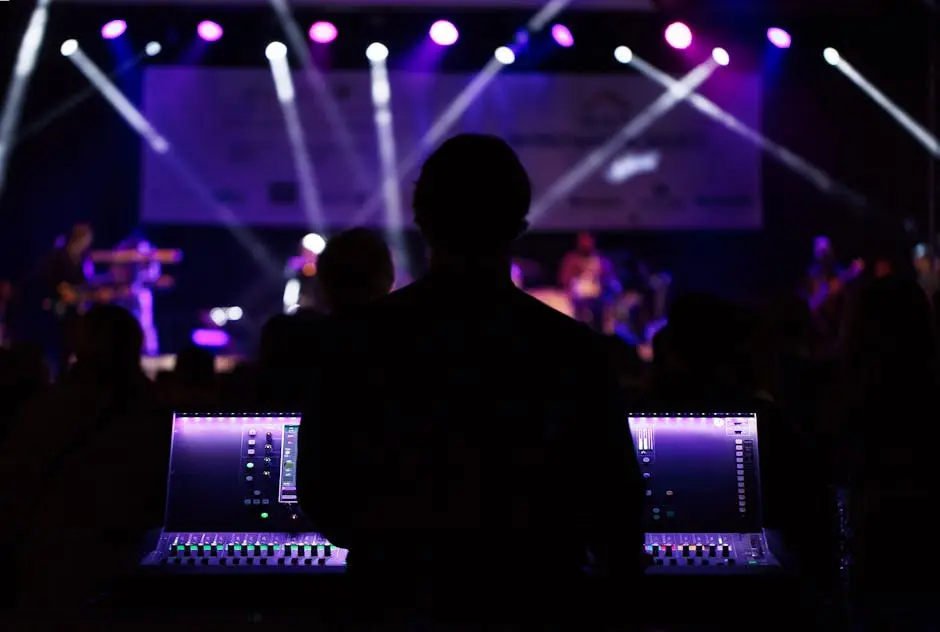DJ stage lighting is an essential element of any live music event, transforming ordinary performances into spectacular shows. With a variety of lighting techniques and equipment available, understanding how DJ stage lighting works can enhance the overall experience for both performers and audiences alike.
Understanding the Basics of DJ Stage Lighting
DJ stage lighting encompasses a variety of lighting elements designed to enhance the visual aspect of performances. It includes everything from simple spotlights to complex LED systems.
This lighting not only provides illumination but also contributes to the overall mood and theme of the event. The right DJ stage lighting can make an ordinary gig feel extraordinary.
Understanding how these elements interact can help you choose effective lighting strategies that resonate with your audience. Whether you’re a DJ, a performer, or an event organizer, grasping these basics is essential.
Types of DJ Stage Lighting
Familiarize yourself with the different types of lighting available, including washes, strobes, and scanners. Each type serves a unique function in creating an immersive environment.
Washes provide a soft, even light that can cover a larger area, making them perfect for filling space during performances. On the other hand, strobes offer dramatic flashes, ideal for accentuating moments in the music.
Scanners are versatile tools that can project colorful patterns and effects onto the stage, drawing the audience’s attention and creating visuals that sync with the beat. Together, these lighting types can form a captivating visual narrative.
By experimenting with these various types of DJ stage lighting, you can craft a spectacle that heightens the performance experience. This knowledge not only assists in setup but also in improvising during live shows.
Choosing the Right Equipment
Selecting the right lighting equipment is crucial for achieving your desired effect. Consider factors such as venue size, budget, and the kind of atmosphere you wish to create.
A small venue might require fewer, smaller lights, whereas larger spaces could benefit from a more extensive setup. It’s essential to strike a balance between intensity and coverage to ensure everyone enjoys the experience equally.
Budget plays a significant role in your choices, but it’s worth investing in quality lighting that enhances your performance. Look for rental options if you’re just starting out or unsure about committing to purchase.
Moreover, consider future gigs and events; versatility in your equipment choice can save costs and provide a solid return on investment. The right DJ stage lighting will transform your set into an unforgettable show.
Programming Lighting Effects
Once you have your lighting setup, learning how to program lighting effects can bring your show to life. This includes syncing lights with music and creating dynamic transitions.
Programming allows you to craft an experience that mirrors the emotions of the music, enhancing the audience’s connection to the performance. It’s not just about placing lights; it’s about storytelling.
Use software that can facilitate this process, allowing for pre-set effects that can be customized at the push of a button. Experimenting with colors, intensities, and patterns can yield surprising and delightful results.
Furthermore, practice is essential. Familiarizing yourself with your equipment and knowing how to react to live music is key. Being adaptable can take a good show and turn it into an amazing experience.
Safety Considerations
Safety should always be a priority when setting up DJ stage lighting. Ensure that equipment is installed correctly and that power sources are managed safely to avoid accidents.
Be mindful of the wiring, particularly in crowded venues. Loose cables can lead to trips and falls, so securing them properly is essential. A little precaution goes a long way in creating a secure environment.
It’s also vital to keep lighting equipment cool and well-ventilated to prevent overheating, which can damage the gear and pose fire risks. Following the manufacturer’s safety guidelines helps mitigate potential hazards.
Finally, educate your team about the equipment being used. Knowledge about safety procedures contributes to a smoother and safer event. After all, no performance should come at the expense of someone’s well-being.
Final Thoughts on DJ Stage Lighting
Understanding DJ stage lighting is crucial for creating the right atmosphere and enhancing performances. With the right tools and techniques, anyone can elevate their DJ setup to leave a lasting impression.








